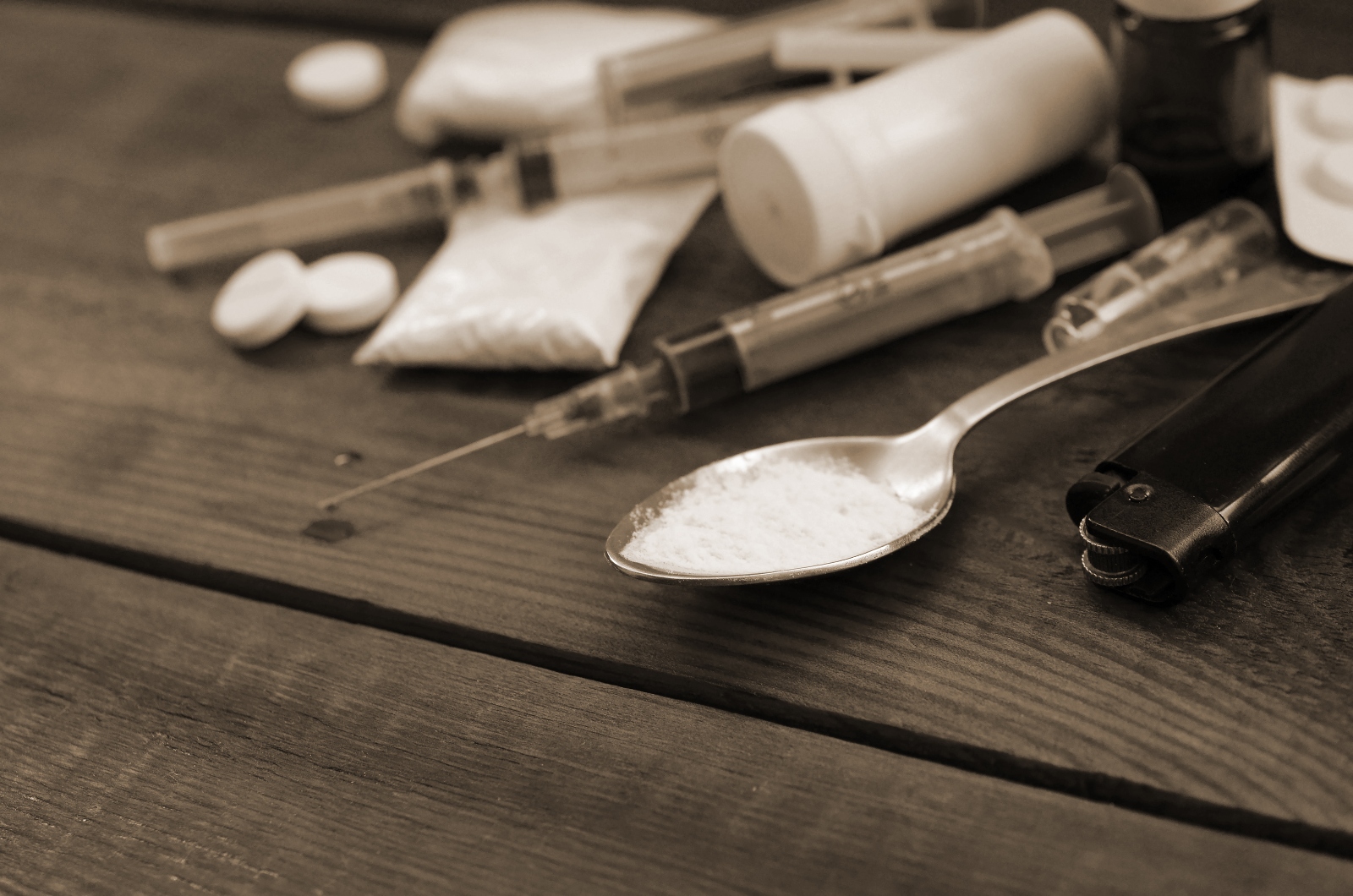Table of Contents
Alarming statistics show that fentanyl was responsible for over 73,000 deaths in the United States in 2022, which accounts for nearly 70% of all opioid-related overdose deaths according to the CDC.
If you or a loved one is struggling with fentanyl addiction, understanding the fentanyl withdrawal timeline is a crucial first step toward recovery. Fentanyl withdrawal can be an intense and challenging process, but with proper medical supervision and support, it can be managed safely and effectively. In this comprehensive guide, we’ll walk you through what to expect during each stage of fentanyl withdrawal and how professional treatment can help.
What is Fentanyl and Why is it So Addictive?
Fentanyl is a synthetic opioid that is up to 100 times more potent than morphine and 50 times stronger than heroin, according to the DEA. Originally developed for pain management in cancer patients, fentanyl has become a major contributor to the opioid crisis due to its potency and high risk of addiction. The drug works by binding to opioid receptors in the brain, releasing dopamine and creating intense feelings of euphoria.
According to the Centers for Disease Control and Prevention (CDC), fentanyl has become the primary driver of the U.S. opioid epidemic, with synthetic opioids (primarily illicitly manufactured fentanyl) accounting for over 73,800 overdose deaths in 2022 (NIDA). Recent data from the DEA indicates that seizures of counterfeit fentanyl pills have increased dramatically in many regions, with some states reporting increases of over 200% in just one year.
When someone uses fentanyl regularly, their body becomes dependent on the drug to function normally. This dependence leads to withdrawal symptoms when the person stops using, making fentanyl detox a necessary first step in recovery.
The Fentanyl Withdrawal Timeline: A Detailed Breakdown
The fentanyl withdrawal timeline can vary depending on several factors, including:
- Duration of fentanyl use
- Typical dosage
- Method of administration
- Individual health factors
- Whether other substances were used alongside fentanyl
- Body mass index (BMI) – research indicates that individuals with higher BMI may experience slower fentanyl clearance and potentially more severe withdrawal symptoms
According to medical research, there is a general timeline that most people experience when withdrawing from fentanyl:
Early Withdrawal (6-12 hours after last use)
The first symptoms of fentanyl withdrawal typically begin within 6-12 hours after the last dose. According to Oxford Treatment Center, withdrawal from short-acting opioids like fentanyl begins more quickly than with longer-acting opioids. These early symptoms often include:
- Anxiety and restlessness
- Muscle aches and pains
- Insomnia
- Excessive yawning
- Runny nose
- Increased sweating
- Teary eyes
Peak Withdrawal (1-3 days)
Medical research published by American Addiction Centers indicates that the intensity of withdrawal symptoms typically peaks between 36-72 hours (1-3 days) after the last use of fentanyl. During this phase, individuals may experience:
- Nausea and vomiting
- Diarrhea
- Abdominal cramping
- Dilated pupils
- Goosebumps
- Elevated heart rate and blood pressure
- Intense drug cravings
- Irritability
- Difficulty concentrating
This is often the most challenging phase of the fentanyl withdrawal timeline, and medical detox is strongly recommended to manage these symptoms safely.
Late Withdrawal (4-7 days)
After the peak phase, physical symptoms begin to subside, though psychological symptoms may persist. According to Laguna Treatment Center, primary withdrawal symptoms typically end around days 5-8, though this can vary between individuals:
- Decreased intensity of physical symptoms
- Continued drug cravings
- Depression
- Anxiety
- Fatigue
- Insomnia
- Poor appetite
Post-Acute Withdrawal Syndrome (PAWS) (Weeks to Months)
Research from the National Center for Biotechnology Information (NCBI) shows that some individuals may experience post-acute withdrawal syndrome (PAWS), which can last for weeks or even months after the acute withdrawal phase. Some studies have found that fentanyl can remain detectable in some individuals for much longer than expected, with one study showing positive tests for fentanyl an average of 7.43 days after admission to treatment, and in some cases up to 19 days. PAWS symptoms include:
- Mood swings
- Anxiety
- Depression
- Sleep disturbances
- Cognitive difficulties
- Persistent cravings
- Low energy
The Importance of Medical Detox for Fentanyl Withdrawal
Due to the severity of fentanyl withdrawal symptoms, attempting to detox at home can be dangerous and is not recommended. While opioid withdrawal is typically not life-threatening, complications such as severe dehydration from persistent vomiting and diarrhea can lead to serious health issues if left untreated, according to MedlinePlus.
A recent study from the Substance Abuse and Mental Health Services Administration (SAMHSA) found that individuals who undergo medically supervised detoxification are significantly more likely to complete the withdrawal process and transition successfully to ongoing treatment compared to those who attempt to detox without medical support.
Medical detox from opiates provides supervised care and medication to manage withdrawal symptoms safely. Research from the National Institute on Drug Abuse (NIDA) has shown that medical detox significantly reduces the risk of relapse during the withdrawal period.
At Crestone Detox and Rehab Austin, our medical detox program offers:
- 24/7 medical supervision
- Medication-assisted treatment to reduce withdrawal symptoms
- Psychological support
- Comfortable facilities
- Nutritional support
- Preparation for ongoing treatment
Medications Used During Fentanyl Detox
According to the National Center for Biotechnology Information (NCBI), several FDA-approved medications are commonly used during fentanyl detox to manage withdrawal symptoms:
Medication-Assisted Treatment (MAT)
- Buprenorphine (Subutex) – A partial opioid agonist that reduces withdrawal symptoms and cravings. According to clinical guidelines from StatPearls, buprenorphine must be started 12-18 hours after the last use of short-acting opioids like fentanyl to avoid precipitating withdrawal.
- Methadone – An opioid agonist that helps manage withdrawal and reduce cravings. The World Health Organization (WHO) clinical guidelines recommend methadone for detoxification from longer-acting opioids, but it’s also effective for fentanyl withdrawal.
- Naltrexone – An opioid antagonist that blocks the effects of opioids and helps prevent relapse. Studies show this can only be started after complete detoxification (typically 7-10 days after last opioid use) to avoid precipitating severe withdrawal.
Research published by NIDA found that patients receiving medication-assisted treatment were 75% less likely to experience relapse during the first month of recovery compared to those who received no medication support.
Symptom-Specific Medications
According to the American Society of Addiction Medicine’s clinical guidelines, these additional medications may be prescribed:
- Clonidine – For anxiety, agitation, and muscle aches. The NCBI notes that clonidine can reduce physical symptoms like sweating, diarrhea, and elevated blood pressure during withdrawal.
- Anti-nausea medications – Such as promethazine or ondansetron
- Sleep aids – Non-addictive options to manage insomnia
- Anti-diarrheal medications – Loperamide is commonly recommended
- Pain relievers (non-opioid) – Typically NSAIDs like ibuprofen
After Detox: Continuing the Recovery Journey
While completing detox is a significant achievement, it’s just the first step in the recovery process. Successful long-term recovery typically requires additional treatment such as:
Residential Treatment
Our residential treatment program provides comprehensive care and support in a structured environment, including:
- Individual therapy to address underlying issues
- Group therapy for peer support
- Family therapy to heal relationships
- Cognitive Behavioral Therapy (CBT) to develop coping skills
- Dialectical Behavior Therapy (DBT) to manage emotions
- EMDR Therapy for trauma processing
The Pew Charitable Trusts reports that the combination of medication with psychosocial treatment is superior to either approach alone, with MAT significantly increasing a patient’s adherence to treatment and reducing illicit opioid use compared with non-medication approaches.
Discharge Planning
Proper discharge planning ensures a smooth transition from treatment to everyday life, with continued support and resources for ongoing recovery. Research published by NIDA shows that patients who maintain long-term medication-assisted treatment with continued behavioral therapy have the best outcomes.
Support for Dual Diagnosis
Many individuals struggling with fentanyl addiction also experience co-occurring mental health disorders. According to the National Center for Biotechnology Information, addressing both conditions simultaneously leads to better outcomes. Our dual diagnosis treatment addresses both addiction and mental health issues simultaneously, including:
- Anxiety & SUD (Substance Use Disorder)
- Depression & SUD
- PTSD & SUD
Take the First Step Toward Recovery
Navigating the fentanyl withdrawal timeline can be intimidating, but with professional support, you can overcome addiction and rebuild your life. At Crestone Detox and Rehab Austin, our mission is to help people become whole again and allow them to live abundant, meaningful, and happy lives. If you or a loved one are struggling with addiction, get in touch with Crestone today.




